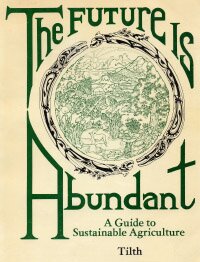
The Future is Abundant
A Guide to Sustainable Agriculture
Tilth Producers of Washington Home | WA Tilth Assoc. | Conference | Directory | Journal | Placement Service | Calendar | Action Alerts
Legislative Update | Bulletin Board | Classifieds | Questions on Agriculture? | Photo Gallery | Links | Contact Us | Join Now | Volunteer

When the first settlers came to the Northwest, they found much of it "covered all over with timber, thick as hair on the back of a dog." Since their first interest was farming, the forests which they encountered were for them largely a nuisance, to be removed only at considerable labor. However, not many harvests passed before the pioneers learned to appreciate the true value of this nuisance, both for their own uses and as an exportable cash crop. A significant portion of of the old growth timber from the Pacific Northwest became houses in pre-earthquake San Francisco. Since then, the history of many communities within the Pacific Northwest has been the story not of farming but of forestry, not of grains and vegetables but of ponderosa pine, Douglas-fir and western red cedar.
In this chapter, we expand the boundary of the forest to i9nclude the city and the orchard, mainstreet and the farm. Imagine the Pacific Northwest as a forest, a forest of fuel and food and lumber. In the clearings, the hillside patches and river ribbons, are our own homes, our cabbage patches, our wheat fields. We harvest from the forest what we need. We leave shallow footprints. We are forest dwellers.
Tilth Producers of Washington Home | WA Tilth Assoc. | Conference | Directory | Journal | Placement Service | Calendar | Action Alerts
Legislative Update | Bulletin Board | Classifieds | Questions on Agriculture? | Photo Gallery | Links | Contact Us | Join Now | Volunteer